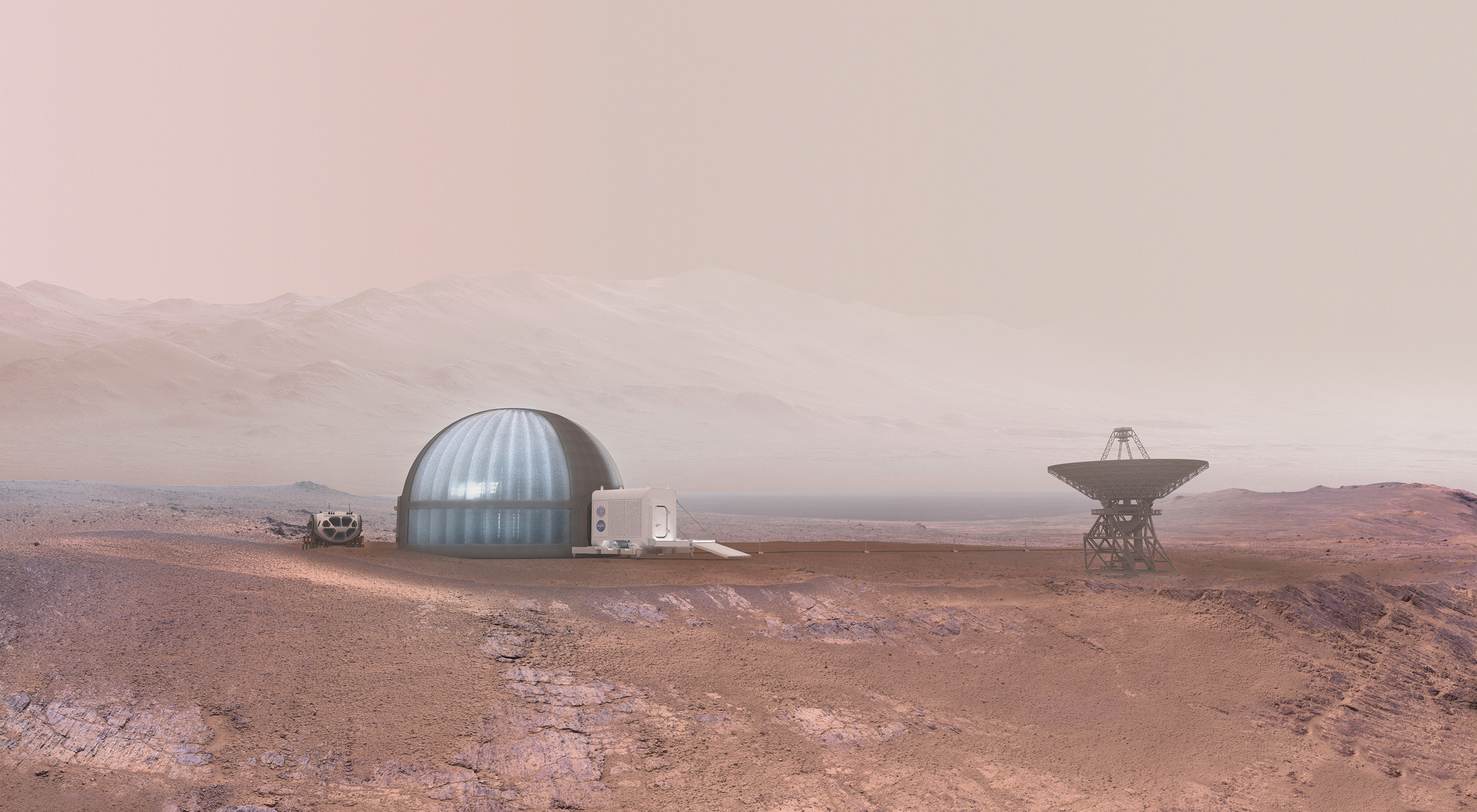
Clouds AO worked with NASA Langley Research Center and a team of experts to develop a concept design and feasibility study for Mars Ice Home, a deployable Mars habitat concept. Galactic cosmic radiation is a significant issue for human health on long duration Mars surface missions. Mars Ice Home is a deployable Mars habitat concept based on an inflatable structure that incorporates in situ resource utilization derived water ice as radiation shielding and as a structural component. Ice Home also provides a large, flexible, and cost effective workspace that can be used for many of the key activities that will be critical for the long term success of a human outpost on Mars.
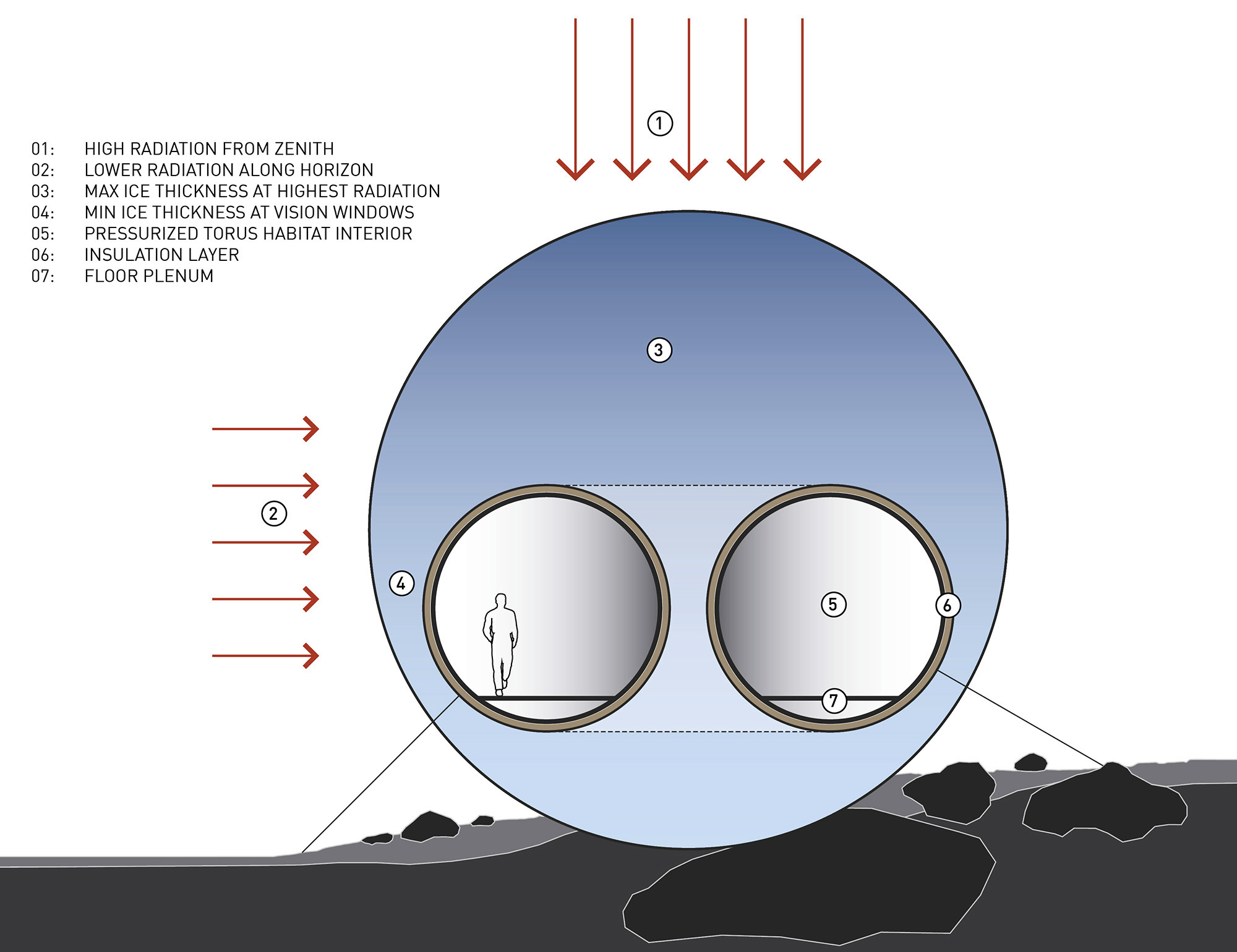
Mars Ice Home will be a component of a human Mars outpost. Mars Ice Home will be connected to one or more additional habitation areas to provide a double storey flexible work and living space with a high level of radiation shielding for Mars mission crew members. Mars Ice Home will interface with external ISRU, Power, Command and Control, and ECLSS systems. Mars Ice Home will have three key elements: The Inflatable Structure Element, the Deployment Systems Element, and the Access and Delivery Element.


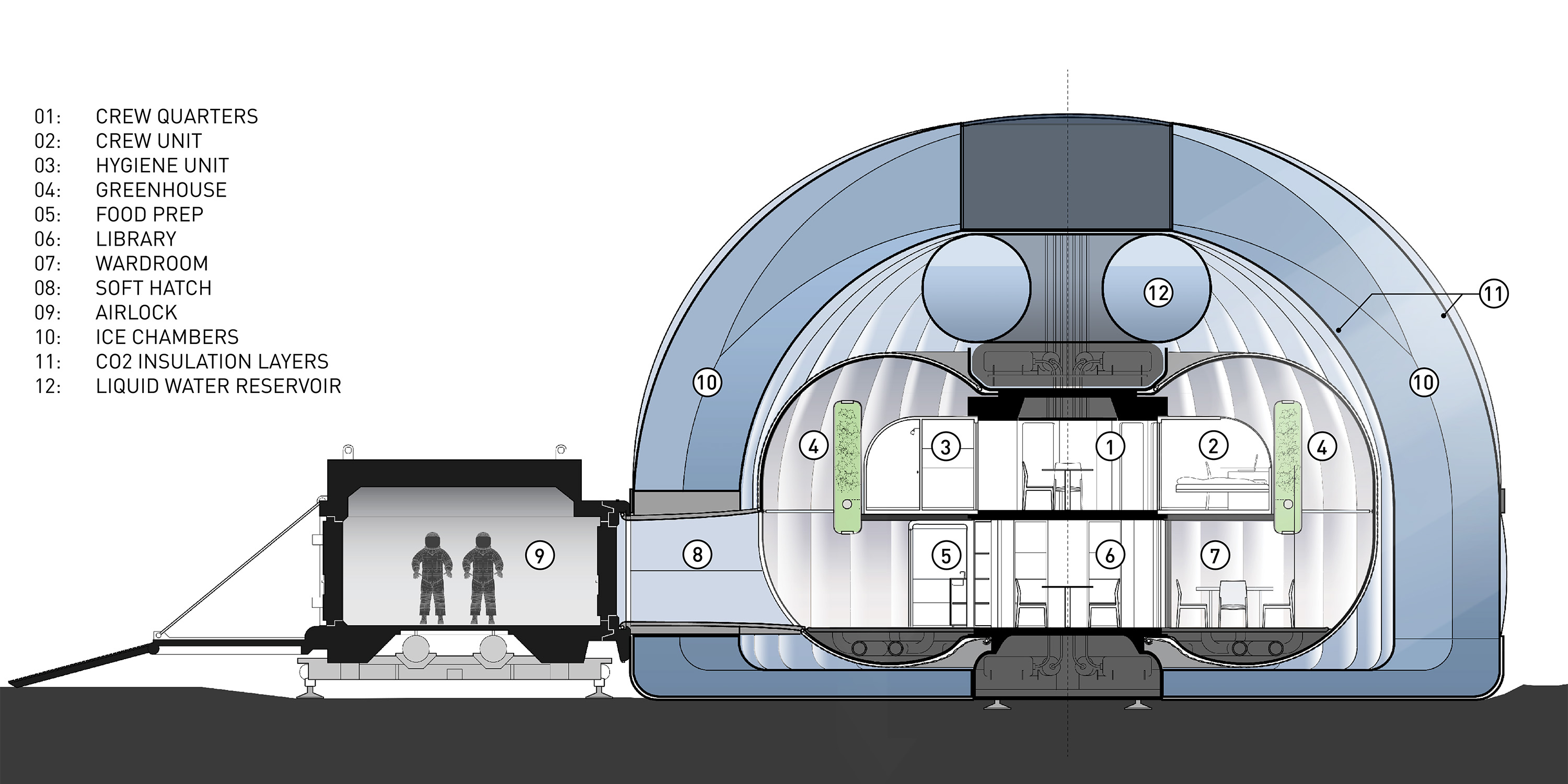
Indigenously sourced water will be used to fill translucent pockets with ice. These pockets allow the Mars Ice Home to be deployed in equatorial latitudes where the temperature may rise above freezing for periods of time. The interior of the habitat will be insulated from the ice with a cellular layer of carbon dioxide, which can easily be extracted from the Martian atmosphere.
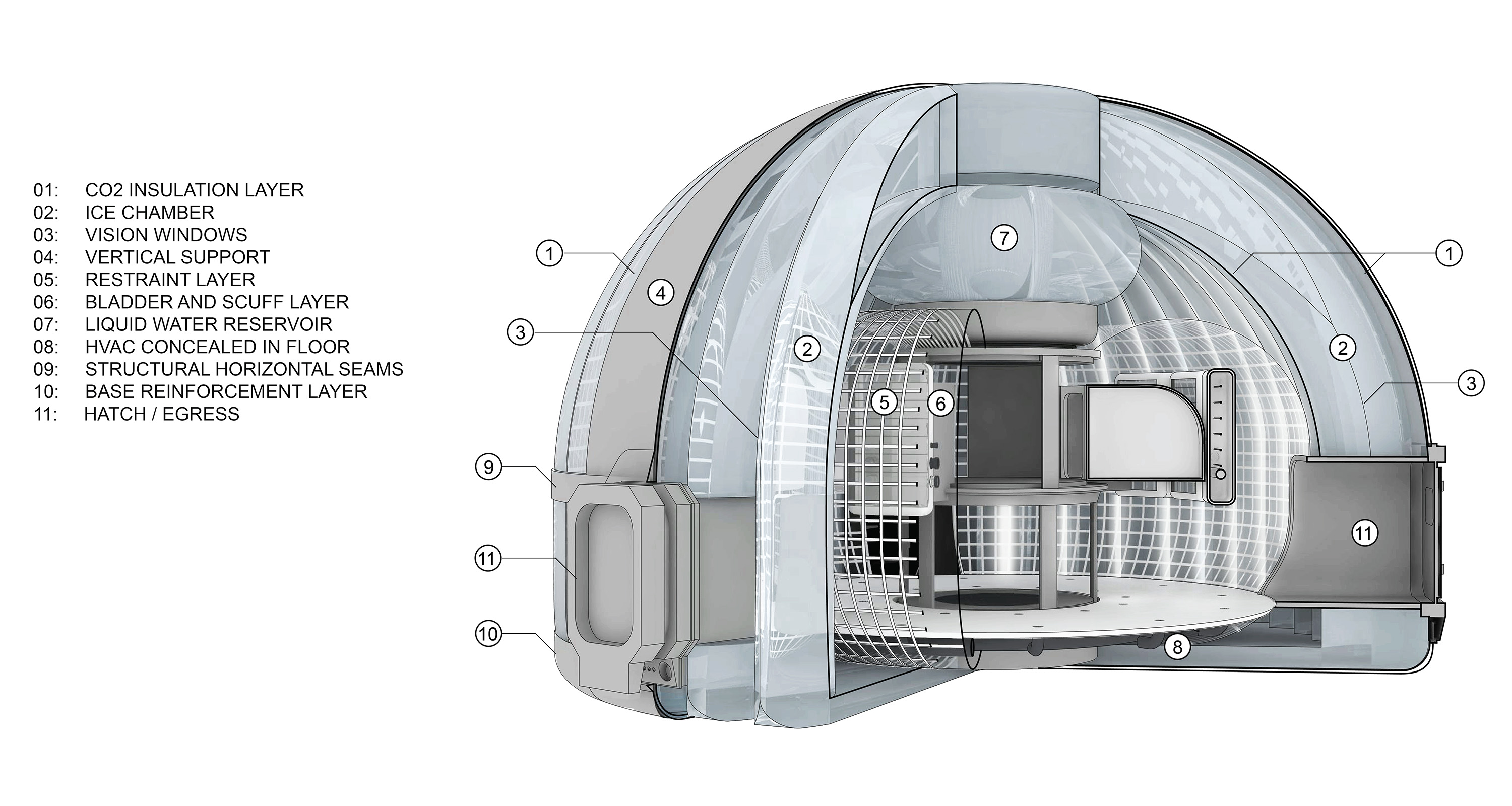
Long term stays on the Martian surface require habitats that reduce launch mass and cost while providing an effective working environment with a high level of shielding from galactic cosmic rays for mission crew members. Translucent ice is the key design element: it allows natural light to permeate the habitat interior keeping occupants connected to diurnal cycles which affect human bio-rhythms; transparent windows allow views out to the surrounding landscape, which is important for mental well-being and crew functionality; ice is an effective radiation shield, the cross section is tapered to provide most ice above since this is the direction with strongest incoming radiation.
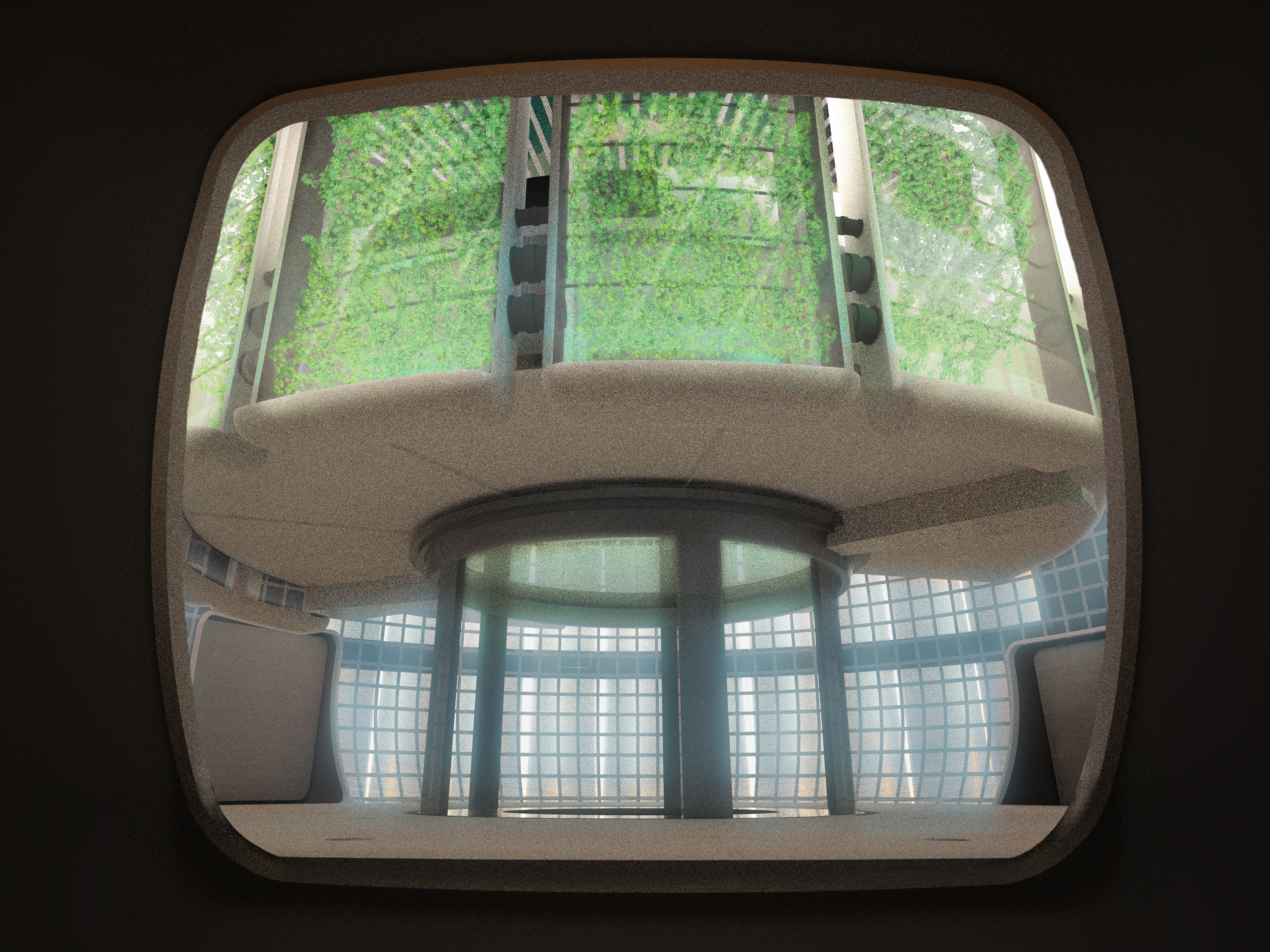
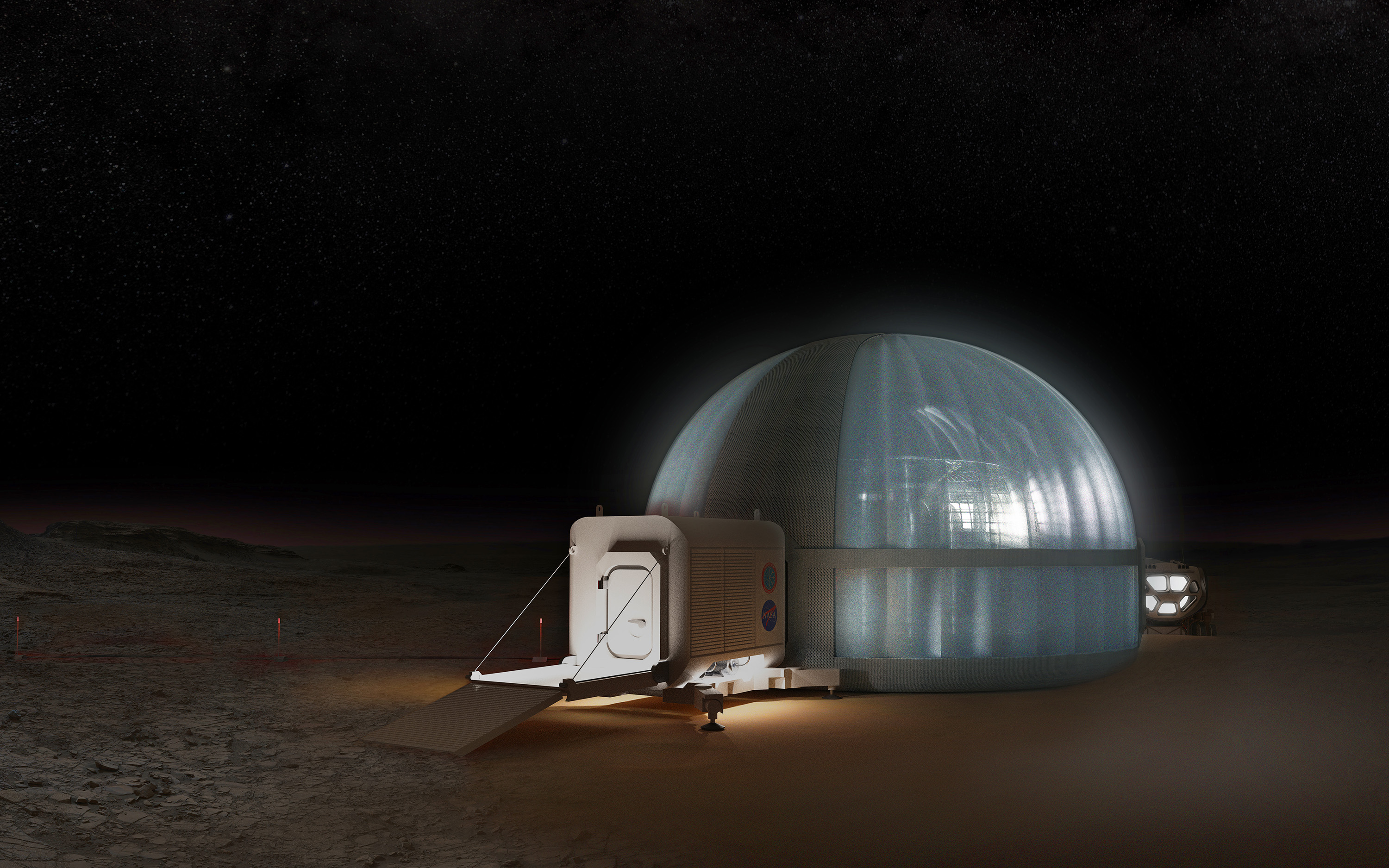
Name: Mars Ice Home
Date: August 2016
Project Team:
Clouds Architecture Office: Ostap Rudakevych, Masayuki Sono, Yuko Sono, Jeffrey Montes
NASA (Langley Research Center)
Space Exploration Architecture
